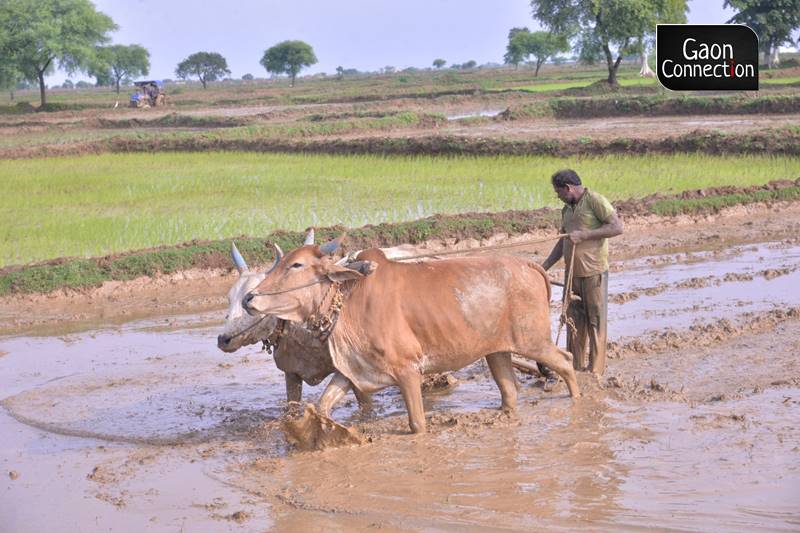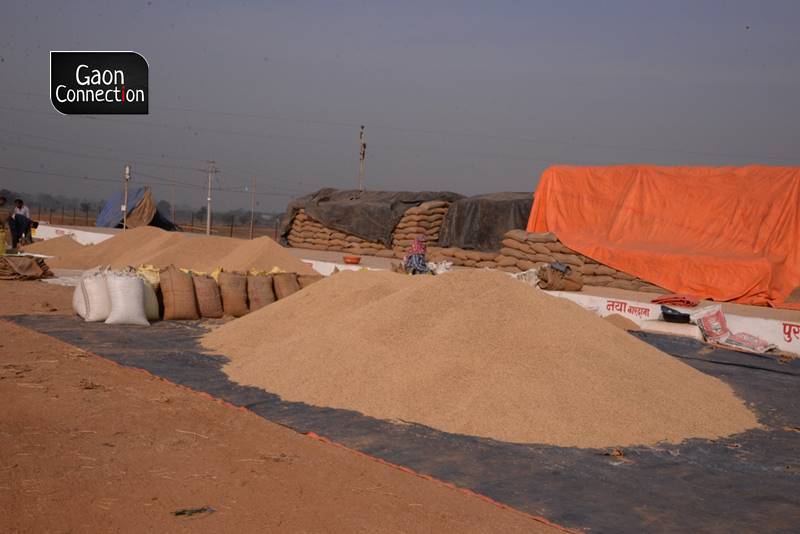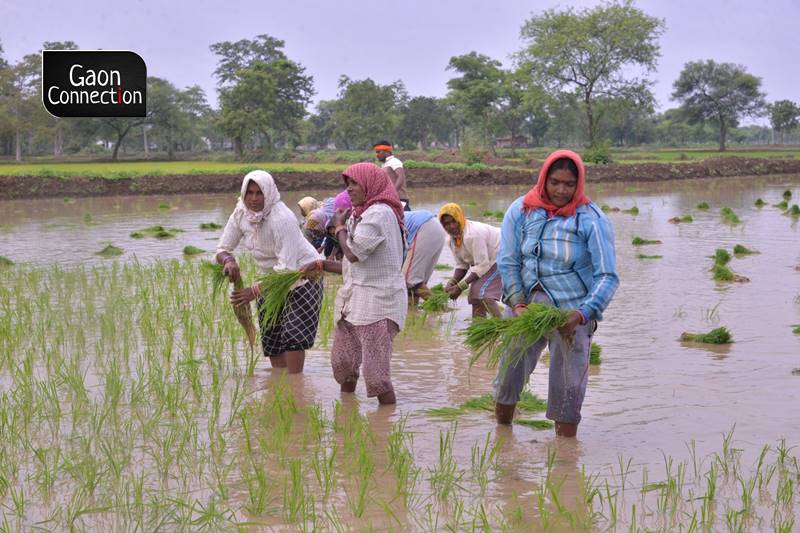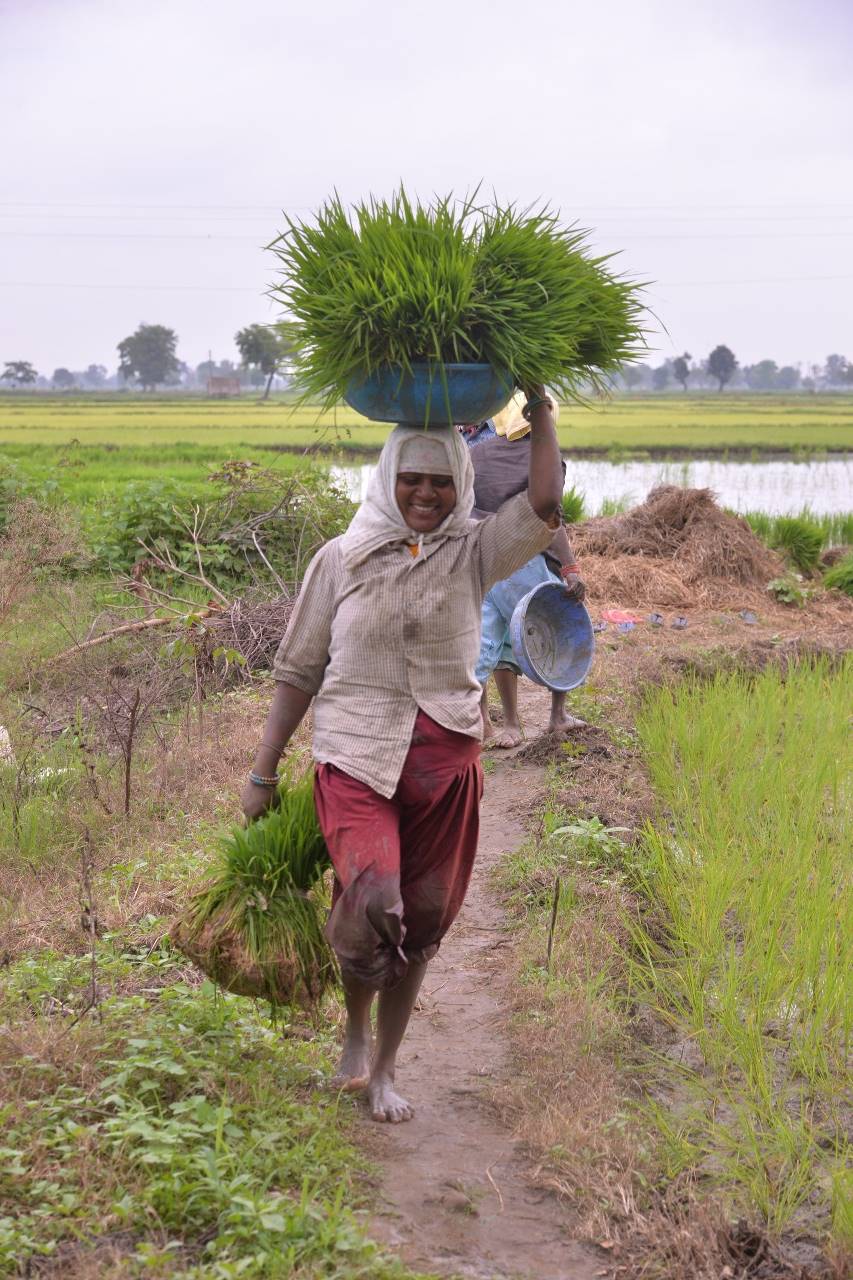Is the much hyped rice-to-ethanol project in Chhattisgarh running out of fuel?
The Chhattisgarh government claims it has ‘surplus’ rice lying in the godowns, which can be converted to ethanol. But, the central government wants the state to buy rice from the Food Corporation of India to make the biofuel. The project is in limbo. Meanwhile, public health experts suggest the surplus rice be distributed through the PDS.


Despite huge amounts of money being spent on the initiative, the unavailability of good quality seeds, brought the jatropha initiative to a grinding halt. All photos: Sagar Farikar
Raipur, Chhattisgarh
The plans to make ethanol out of rice grown in Chhattisgarh, known as the rice bowl of India, are hanging fire. Despite making big announcements and the state government signing contracts worth millions of rupees, no headway has been made in the proposed programme that plans to use ‘surplus’ rice produced in the state to make ethanol, a biofuel.
Last year, between September and December, the Chhattisgarh government signed a Memorandum of Understanding (MoU) with investors to the tune of Rs 11,620 million in order to produce ethanol out of 600,000 metric tonnes of rice. It was estimated that approximately 890 kilolitres of ethanol per day would be manufactured in the state.
Also Read: Rice racket: From the paddy fields of Bihar to the mandis of Punjab
However, almost a year later not much progress has been made as the matter is stuck between the state government and the central government’s Food Corporation of India (FCI). Even the process of finalising the location of the manufacturing units has not been completed.

“We always have surplus paddy, much more than the procurement target the central government sets for us. So, we requested the central government to allow us to make ethanol out of the surplus rice,” Manoj Soni, special secretary, Food Civil Supplies and Consumer Protection Department, Chhattisgarh, told Gaon Connection.
The central government, however, according to Soni, insists the state buys the rice from FCI in order to make the ethanol.
Similar concerns are voiced by Sumit Sarkar, project officer, Chhattisgarh Biofuel Development Authority. “Chattisgarh is encouraging the manufacturing of ethanol from rice. Our chief minister, Bhupesh Baghel, has already written to Prime Minister Narendra Modi and the central government about this,” said Sarkar.

The Chhattisgarh chief minister has also met the Union food minister and the petroleum minister, informed the project officer. “But the central government insists that the surplus rice at FCI should be used to start manufacturing the ethanol. The state government wants permission to instead utilise the surplus rice in the state to do that,” Sarkar told Gaon Connection.
Bumper paddy crop, rice rotting in godowns and no ethanol production
Chhattisgarh is a leading producer of rice in the country and when the central government approved of manufacturing ethanol from rice in 2018, it was expected that several ethanol-manufacturing units would spring up in the state.
The central government had stipulated that the state would have to buy rice to make ethanol, a renewable biofuel made from biomass including rice, maize and sugarcane. But the Chhattisgarh government wanted to make ethanol from the huge surplus rice in its own state. Because of this stalemate, the project is yet to take off while the ‘surplus’ rice is lying in the godowns in the state.

Also Read: Water hyacinth — a nuisance for water bodies, can now be used to produce organic fertilisers
According to data provided by the state agriculture department, 12.7 million metric tonnes of rice is grown annually in the state. Interestingly, Chhattisgarh buys rice at the highest rate in the country. While last year the central government fixed Minimum Support Price (MSP) for rice was Rs 1,868 a quintal, in Chhattisgarh it was Rs 2,500 a quintal.
In the last financial year 2020-21, the state government procured a record 9.2 million metric tonnes of rice. In 2019-20, it was 8.4 million metric tonnes and the year before, in 2018-19, the procurement was 8 million metric tonnes.
The central government continues to take only 2.4 million metric tonnes of rice from Chhattisgarh. State government officials complain that millions of rupees worth of grain is lying unused and rotting in the granaries of the state, which could be used to produce ethanol.
Manoj Soni, Special secretary, Food Civil Supplies and Consumer Protection Department, Chhattisgarh, informed Gaon Connection that of the 9.2 million metric tonnes of paddy procured in 2020-21 by the state government, 7.6 million metric tonnes were milled. However, 1.5 million metric tonnes of harvested paddy were still lying in godowns.

“Also, nearly ten lakh metric tonnes of paddy that was procured at two thousand five hundred rupees a quintal, had to be auctioned off at twelve hundred to fourteen hundred rupees a quintal,” said Soni. With over 1.5 million metric tonnes of paddy lying unsold, the state government believed that making ethanol out of it was a reasonable way to make good the losses.
Plans, but only on paper
In November 2018, plans began to be drawn up for the setting up of ethanol plants in Chhattisgarh. The following year, on August 13, 2019, the state cabinet declared that plants would be set up to manufacture bio-ethanol from paddy, sugarcane, maize, millets, etc. It was expected that within six months the manufacturing processes would be in place. However, that did not happen.
Last year, between September and December, the state government signed MoUs with various investors to produce ethanol out of 600,000 metric tonnes of rice. But not a drop of the biofuel has been generated under this plan so far.
The situation is reminiscent of what happened in 2006-07 in the state, then under the Bharatiya Janata Party government. The state government had floated plans to produce biofuel out of the jatropha plant, and even devoted large tracts of land to grow the jatropha. The government had claimed that by 2014, Chhattisgarh would be self-sufficient when it came to biofuel.
But the enthusiasm ran out of fuel by the time the year 2014 came around.
Despite huge amounts of money being spent on the initiative, the unavailability of good quality seeds, brought the jatropha initiative to a grinding halt. And similar fears are being expressed for the rice-to-ethanol plans too.

While he considers the possibility of making ethanol from rice promising, Raipur-based agriculture scientist Sanket Thakur is sceptical about how successful it will be. “The state has a bumper crop of paddy and it makes sense to make ethanol with all the excess grains we have,” Thakur told Gaon Connection. But, he pointed out how the plans had fallen flat with the precious government, and nothing had come out of it. It was the same with the jatropha project too, he said.
“If one litre of ethanol can be made out of two kilos of rice costing thirty rupees a kilo, then it is much cheaper than a litre of petrol that costs hundred rupees a litre now,” the scientist said. But what exactly did the government want to do with the ethanol, he asked.
Rice-to-ethanol: A loss making venture?
There are murmurs of dissent in the opposition party (BJP) in the state, which claims the rice-to-ethanol programme will be a loss making venture.
“Nothing good will come out of the project of making ethanol from rice; there is very little chance of making a success of it,” Dharamlal Kaushik, opposition leader in the Vidhan Sabha, told Gaon Connection.
Making ethanol out of spoiling paddy is one thing, but using rice that costs up to Rs 25 a kilo to do that cannot be a profitable venture, Kaushik continued. “Such a project cannot survive,” he declared.

On the other hand, Ravindra Chaubey, government spokesperson and the state’s agriculture minister, said that the rice-to-ethanol initiative would be beneficial to the farmers. “Setting up ethanol units in the state will give the state economy impetus,” Chaubey told Gaon Connection.
“The work on the ethanol project is moving rapidly. There is a constant dialogue with the central government on the matter,” the state agriculture minister added. He also informed that the central government had also given environmental clearance for the project. “The state had already got permission to produce ethanol from sugarcane and maize,” Chaubey said.
Use ‘surplus’ rice to address food security
Public health researchers have strong reservations towards the rice to biofuel project. “This idea of making ethanol from rice will affect food security,” Sulakshana Nandi, national joint convener, Jan Swasthya Abhiyan, told Gaon Connection. “There are many instances of malnutrition in Chhattisgarh. Added to that was the economic hardships, the COVID 19 pandemic had brought about,” said the public health expert based in Raipur.

Also Read: Rising hunger stares rural India in the face as the second wave of COVID invades villages
“The government should first ensure the good health of its people. Instead of the seven kilos of rice it gives each person through the PDS [public distribution system], the government should distribute fifteen to twenty kilos,” Nandi suggested, adding that if there was surplus rice in the state, it should give it to those states that did not have enough rice to that poor and needy can be fed.
While paper wars are on and there is exchange of letters, plans and debates over the setting up of ethanol making plants in Chhattisgarh, it remains to be seen how long it will be, if at all, for the project to see the light of day.
Read the story in Hindi.

